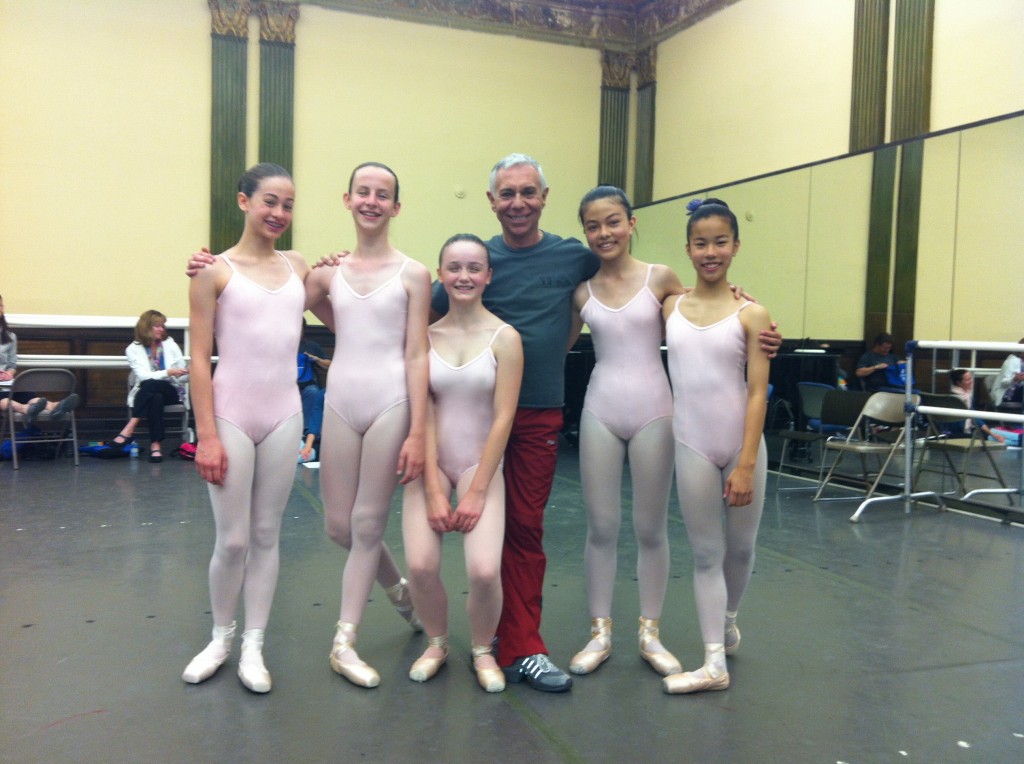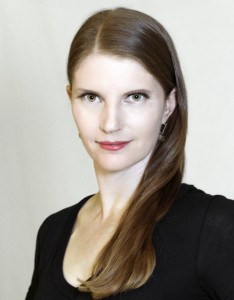4dancers has been following along with Dalia Rawson from Ballet San Jose as the school participates in American Ballet Theatre’s National Training Curriculum program. Today and tomorrow we’ll feature posts that reflect on the day-to-day experience of the teacher training portion…
(You can find the very first post in this series here if you’d like a little more background.)

by Dalia Rawson
Tuesday, May 29, 9:37PM: The Day Before
Tomorrow is the day. Teacher training at Ballet San Jose School for certification in the American Ballet Theatre National Training Curriculum finally will begin. Fifty-two people – about half dancers, faculty, and staff from Ballet San Jose, and half from the Bay Area, out of state, and even as far away as Japan – have signed up to take the first of three training courses necessary to become certified in all levels of the ABT National Training Curriculum. This course covers the Primary Classes and Levels 1, 2 and 3 of the Curriculum, and I can’t wait to get started, not only to learn the material, but to learn more about how the implementation of the Curriculum will benefit our student body.
I look forward to welcoming people early tomorrow morning into the 1920’s era building that is home to the Ballet SJ Studios here in downtown San Jose. I think we are ready. We have studios and pianists scheduled, and twenty student demonstrators confirmed, five for each of four days of demonstration classes. Franco De Vita, Raymond Lukens and Meaghan Love arrived earlier today from New York, and we showed them around the Ballet SJ Studios. It seemed we had everything they needed, and it looks as if we’re all ready to go!
I’m so excited that the training session is about to begin, and am finding it hard to calm down and get ready to bed. One final very girly question remains to be answered tonight: what on earth am I going to wear tomorrow?
Thursday, May 31, 9:23PM: After Day One
What a day! So many excited instructors arrived, filling our hallways and lobby as they registered. We each received an enormous binder with the curriculum guidelines, illustrated glossaries, and sections on health and development. After welcoming us to the program, Raymond introduced himself and Franco, and then began a detailed discussion about the motivation behind creating a National Training Curriculum. It seems that the administration of American Ballet Theatre had scheduled a retreat to deal with the issue of dancers who were so stylistically specific that it became problematic. This was not only an artistic issue for the dancers who had trouble adapting to various choreographers, but became a physical liability, as learning new movement vocabularies was so foreign to these dancers that it was leading to injuries. Additionally, dancer health issues, such as younger and younger dancers developing serious injuries, and the dangers of over stretching were discussed. The idea was put forth that a National Training Curriculum should be developed, not only to benefit the 5% of people who have the natural potential to become professional ballet dancers, and to help them to safely develop solid technique and artistry, but to create a broader base of love, support and understanding of the art form, through healthy, safe, and appropriate training for people with all ranges of natural ability.
We dove right into the National Training Curriculum’s ten principles of classical ballet training, which broke down the concepts that ballet teachers need to be able to explain and pass on to their students into easy to understand and comprehensive categories, defining fundamental but sometimes vague terms such as “placement,” “posture,” and “turnout” clearly and specifically. Ballet terminology was addressed, and the need for a standard naming of steps was explained. Considering the international nature ballet training, and the wide range of names for each step that are in common use, it is easy to appreciate the need for standardized glossary.
The guidelines affirm the teachings of those teachers whose lessons and insights I found most valuable as I was training. The curriculum supports the development of coordination of the upper body to the lower body; the use of clean, unaffected port de bras; and the use of musicality to promote technical, muscular and artistic development through proper dynamics and quality of movement; as well as the use of proper turnout and healthy placement.
Following a few hours of introductory lectures we took a quick lunch break and returned to a sample class at the Primary Level taught by Raymond Lukens. We were to be the students, and it was a funny experience to participate in a class scaled for 5-year-old beginners with instructors from around the world and the beautiful dancers from Ballet San Jose! Nothing beats watching our Principal Ballet Master Raymond Rodriguez taking class as a five year old learning to skip.
Raymond Lukens had us all form a circle, and taught us a class in the same manner in which he would teach a class of five-year-old dancers. Mr. Lukens demonstrated the necessity of theatricality when teaching young students, reminding me that the best advice I ever got about how to relate to young students was to wear bright lipstick, sparkly earrings, and to have the most animated, happy face possible. Among our Ballet SJ School faculty, we fondly call this the “Lambchop” factor, in homage to Sheri Lewis and her famous children’s sock puppet.
I am trying to work on my “Lambchop” factor. As a former professional dancer I take myself and my artistic practice perhaps a bit too seriously, so this has been a difficult thing for me to develop. But I have improved, influenced by Ms. Elizabeth Hutter, a clinical psychologist with a Harvard degree and Ballet San Jose’ who looks and acts like a fairy princess while teaching our Open Division classes; and Ms. Kristin Bertrand who had every Open Division student fall absolutely in love with her when she would teach. I have learned to try to let myself go, and turn each class into a little performance, using my expressive abilities to fully participate in the imaginative elements of each class.
So now I have a dilemma. We need to demonstrate a combination for a Primary Level class tomorrow, and I have a decision to make. I prepared two combinations. One I consider to be a simple, clear and elegant plié combination. The other is my attempt at an exercise based on imaginative ideas with arm and finger movements. It involves petting imaginary bunnies and looking at imaginary twinkly stars. I am not sure why the bunnies are out at night, but this is my first foray into creating something like this on my own, without copying a concept from Ms. Hutter or Ms. Bertrand. I am not sure if I will have the guts to perform my bunny petting combination in front of a group that includes some somewhat judgmental professional dancers, so I might wimp out and do pliés. I hope I have the courage to bust out the bunnies!
Check back tomorrow for part two of Dalia’s post on the teacher training…

BIO: Principal of Ballet San Jose School and the Artistic Director of The Rawson Project Contemporary Ballet, Contributor Dalia Rawson was recently awarded a Fellowship by the New York Choreographic Institute. She founded The Rawson Project in 2010 in order to support the creation of new works that fuse classical ballet technique with a contemporary aesthetic.
As a dancer, Rawson performed a wide variety of leading roles with Ballet San Jose, (formerly Cleveland Ballet), from 1991 through 2006. Rawson’s choreography has been performed both by Ballet San Jose and the Ballet SJ School, and for her own company she has created a repertory of award-winning ballets that showcase the virtuosity, expressive range, and extreme lines of classically trained dancers in edgy and original dances.





[…] Principal of Ballet SJ School Dalia Rawson wrote a two-part blog series for 4dancers exploring the teacher training experience. With the second session beginning […]